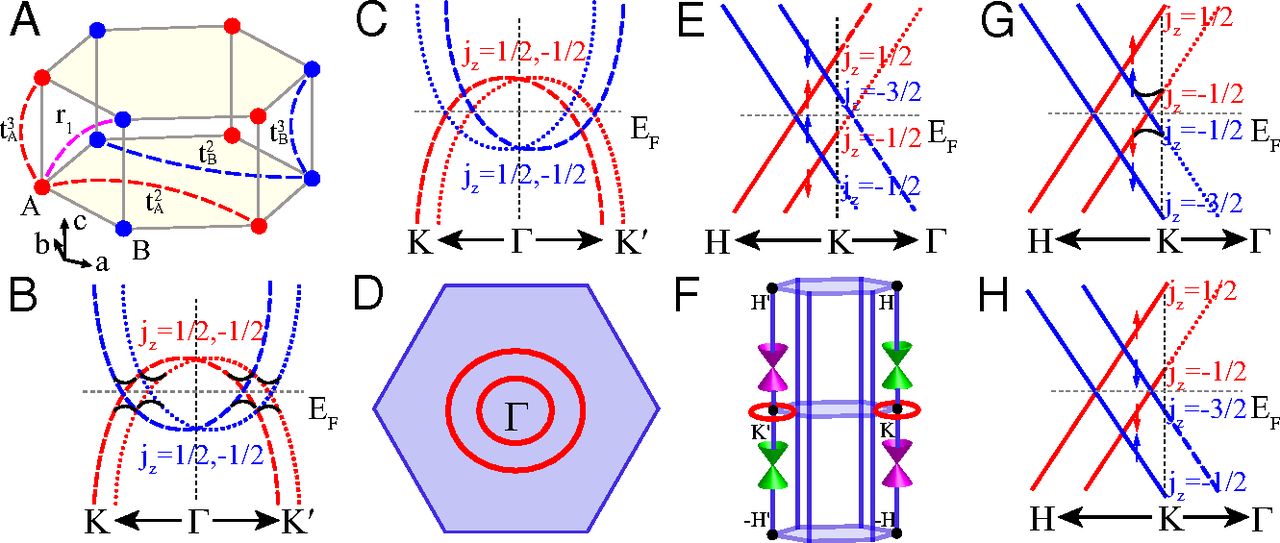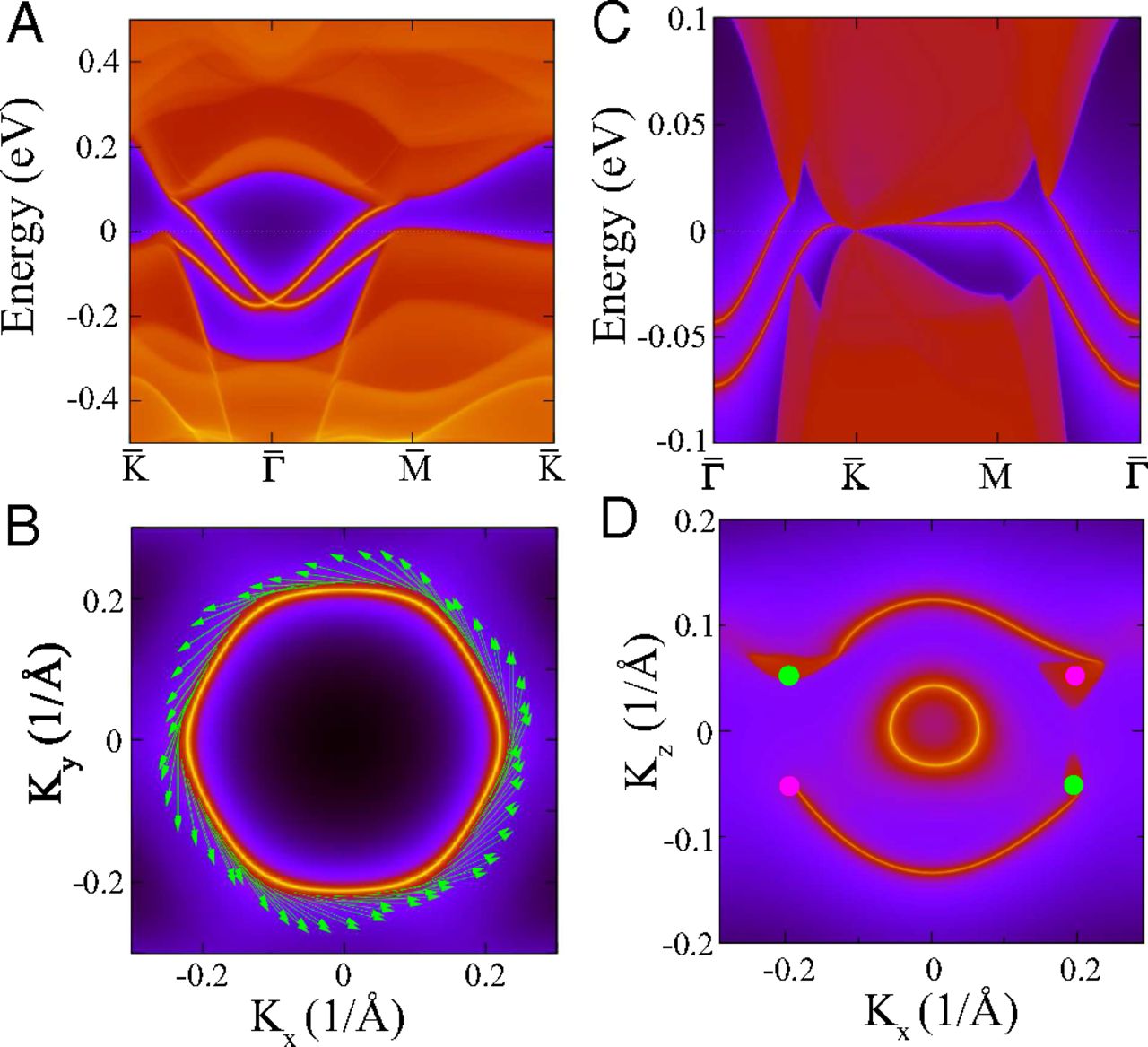在量子场论理论中,作为基本粒子,外尔费米子扮演着重要角色,在最近一些年,虽然它在高能物理方面仍未被发现,但是在凝聚态物理中引起极大兴趣。在三维材料,非简并且线性色散能带的低能激发满足外尓方程,能带交叉点被称为外尓节,这样的固体材料被称为外尓半金属。外尓半金属具有许多新奇的物理性质,例如手性异常等。最近外尓节和费米弧成功地在化合物TaAs家族中被预测,随后这一预测得到实验证实。由于TaAs化合物中存在着24 个外尓节,同时在费米能级附近存在着许多平庸地电子和空穴型的费米口袋。这样复杂的电子结构对奇异的光谱和输运性质起源的解释引起许多争论。因此,寻找具有较少外尓节且位于费米能级上的外尓半金属是当前凝聚态物理重要的研究方向。
在本文,我们研究了一个空间反演被破坏的三维蜂窝晶格结构的理论模型,同时许多拓扑非平庸态被实现,如三维强拓扑绝缘体,外尓半金属,节线半金属等。 这个模型为探索拓扑材料提供了新途径。基于密度泛函理论,我们展示稀土-硫-碘LnSI (Ln = Lu,Y, Cd)满足这一模型,其中LuSI 和 YSI 是强拓扑绝缘体,而GdSI 是理想的外尓半金属。LuSI 和 YSI产生非平庸地表面态,它们的费米弧呈现右手螺旋。GSI只存在一对外尓节且位于费米面上,在010表面展示两条较长的费米弧。这种性质为角分辨光电发射光谱实验证实提供了完美平台。

Fig. 1.
Fig. 1.Schematic of topological phases. (A) The A–A stacked honeycomb lattice and hopping parameters are shown, where A sublattice (red dots) is occupied by pzpz orbital, while B sublattice (blue dots) is occupied by dz2dz2 orbital. (B) The 3D strong TI. (C) Nodal-line semimetal with two nodal lines circled around the ΓΓ point as shown in D. (E) Topological semimetal coexisting of both WNs and nodal lines as shown in F. (G) Double WSM with two pairs of double-Weyl points. (H) Ideal WSM holding four pairs of WNs. The red (blue) lines in B, C, E, G, and H represent the pzpz type (dz2dz2 type) bands, and different eigenstates of MzMz are distinguished by the dashed (mz=imz=i) and dotted lines (mz=−imz=−i). The effective jzjz at the ΓΓ or K point as well as the spin direction for each band are also labeled.

Fig. 3.Surface states and Fermi arcs. (A and C) Band structures of LuSI and GdSI projected onto the (001) face, respectively. (B) Topological surface states and corresponding spin texture on the (001) face of LuSI. (D) Fermi arcs in the (010) surface BZ of GdSI.
目前,在强磁场中心与实验组已经合成多晶的GdSI样品,为进一步实验证实提供了坚实基础,同时引起了多个实验组的巨大兴趣,为外尔物理的研究提供了一个理想平台。
